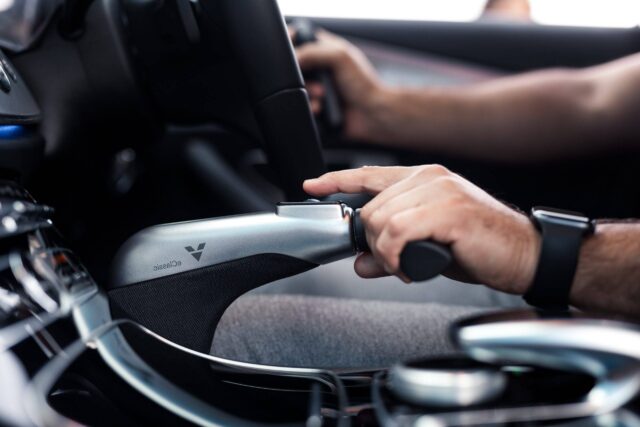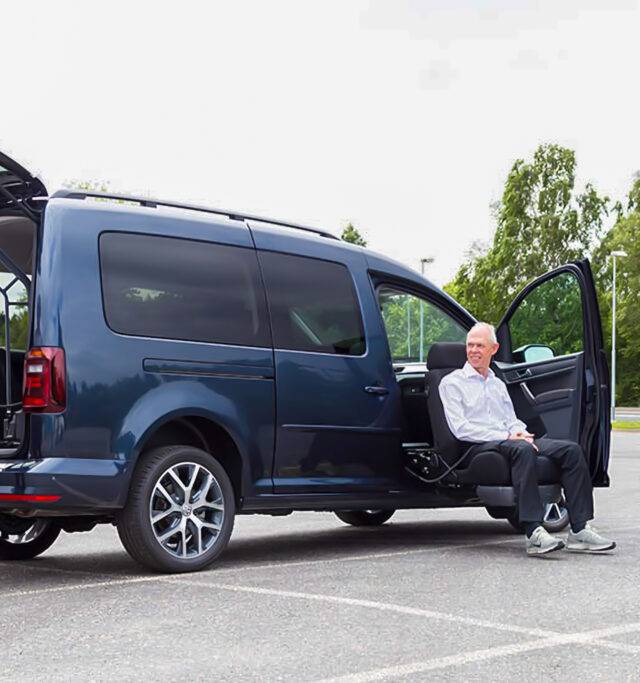Regaining independence as a disabled driver
Living with a disability can present unique challenges, but with the right adaptations, individuals can regain their independence as a disabled driver and enjoy the freedom of the open road.
Let’s explore the process of returning to driving safely and confidently.
Assessing individual abilities
The first essential step to return to driving is taking a disability driving assessment by your local assessment centre. It’s important to note that this is not a test to pass or fail, it is simply to assess your current requirements and capabilities in order to provide the right advice and guidance.
The assessment is carried out by an experienced occupational therapist and approved driving instructor and usually takes about 3 hours. It typically consists of:
- An introduction to discuss your current situation such as basic medical and driving history.
- A basic physical assessment to identify areas of difficulty and areas of strength.
- A basic cognitive assessment to identify level of ability.
- A visual test specific to driving requirements.
- A 50-minute drive to gain an overall understanding of your current driving ability.
- Return to the Assessment Centre for a summary debrief and advise on next steps.
Based on the assessment findings, the assessor will provide recommendations on the appropriate car adaptations that would best suit your needs. You will also be given feedback on your performance and advice on next steps.
Adaptive driving equipment
Now that you have a better understanding of your current situation and driving with an adapted car, it’s time to choose your specific driving adaptations.
Thanks to advancements in technology and dedicated manufacturers, there are a broad range of adaptive driving equipment to improve the driving experience and help regain your independence as a disabled driver.
The most popular solutions include:
Hand Controls transfer the acceleration and brake from the foot pedals to your hand.
Electronic Accelerators move the function of acceleration from foot to hand with reduced effort required.
Left Foot Accelerators can be fitted to the left of the brake pedal to allow operation with your left foot.
Pedal Modifications can benefit individuals with a range of disabilities that affect their ability to use conventional pedals.
Steering Aids enable the one-handed operation of a vehicle’s steering wheel; these simple adaptations are often used in conjunction with hand controls.
Remote Control Devices allow drivers with limited mobility to steer the car and operate a range of secondary functions, such as the indicators, horn, headlights and wipers.
At Mobility in Motion we have the widest product offering under one roof, ensuring that you get the perfect match for your needs and vehicle compatibility.
There are also accessibility aids available to help you get seated in your car and loading systems to help lift your wheelchair or mobility scooter within your car.
Driver tuition programs
If you require additional driving lessons to regain your full licence or simply want some extra support getting back behind the wheel and boost your confidence with your driving adaptations, there are specialist Disability Driving Instructors throughout the UK to assist you.
They are specially trained to give lessons in your own adapted car to ensure the transition to driving independently with vehicle adaptations is as smooth as possible.
Navigating legal requirements
The DVLA (or the DVA in Northern Ireland) in the UK stipulates that drivers must inform them of any health condition or physical change which might impact their driving abilities.
Not only this, but if you need adaptations to control a vehicle, you must also inform the DVLA, as codes must be added to your driving licence. The report from your driving assessment will outline these codes, ensuring you are legally licenced and insured to drive with the adaptations that you require.
Building confidence through practice
Following your driving tuition we advise gradual practice in controlled environments to further build your driving skills and enhance your confidence. Start with shorter, local journeys so you are fully concentrating on driving with the adaptations rather than also navigating unfamiliar roads and directions.
The significance of practice and patience shouldn’t be overlooked as it truly ensures a smooth transition to more complex driving situations.
Community support
Although there are professionals there to provide support and guidance throughout every stage in the process of returning to driving, we highly encourage you to connect with individuals with shared experiences. Through local support groups and organisations for people with disabilities, you can gain valuable insights, knowledge and encouragement from others with first hand experience.
Get in touch with our team at Mobility in Motion who will be able to talk you through the available vehicle adaptation solutions and arrange to install your driving controls so you can regain your independence as a disabled driver.
If you’re looking for further advice on driving with a disability, read our detailed guide designed to help you get back on the road with confidence.

Driving with adaptations
What To Expect During a Disability Driving Assessment
Living with a disability can present unique challenges, but with the right adaptations, individuals can regain their independence and enjoy the freedom of driving. One essential…

Accessible travel
The Complete Guide To The Motability Scheme
The Motability Scheme is a registered disability charity that provides access to affordable motoring for people with disabilities. Read our complete guide to the Motability Scheme…

Lifestyle
Our Top 5 Accessibility Apps For Increased Independence
If there’s two things we love at Mobility in Motion, it’s accessibility and technology. Thanks to the invention of the much loved smartphones and tablets, there…